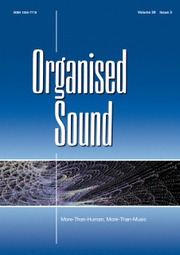Article contents
A review of time–frequency representations, with application to sound/music analysis–resynthesis
Published online by Cambridge University Press: 04 April 2001
Abstract
Analysis–resynthesis (A–R) systems gain their flexibility forcreative transformation of sound by representing sound as a set of musicallyuseful features. The analysis process extracts these features from the timedomain signal by means of a time–frequency representation (TFR). TheTFR provides an intermediate representation of sound that must make thefeatures accessible and measurable to the rest of the analysis. Until veryrecently, the short-time Fourier transform (STFT) has been the obviouschoice for time–frequency representation, despite its limitations interms of resolution. Recent and ongoing developments are providing severalalternative schemes that allow for a more considered choice of TFR. Thispaper reviews these contemporary approaches in comparison with the moreclassical ones and with reference to their applicability, merits andshortcomings for application to sound analysis. (Where they have beensuccessfully applied, details are provided.) The techniquesreviewed include linear, bilinear and higher-order spectra, nonparametricand parametric methods and some sound-model-specific TFRs.
Information
- Type
- Research Article
- Information
- Copyright
- © 1998 Cambridge University Press
- 4
- Cited by

